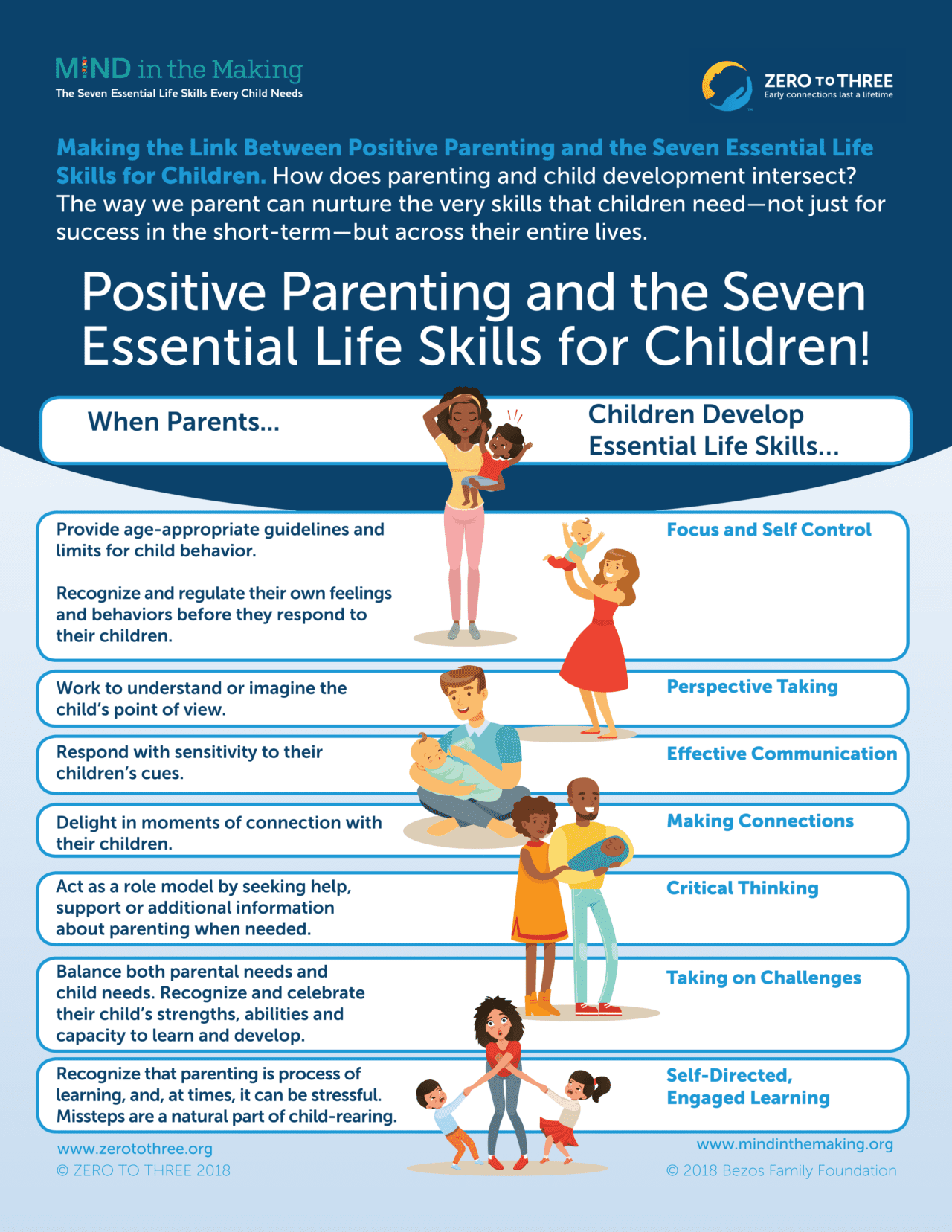When done well, gentle parenting builds confidence in young children and forges strong parent child relationships.
Home/Resources/Early Development/The Importance of Responsive Parenting: Building Strong Emotional Bonds From Birth
The Importance of Responsive Parenting: Building Strong Emotional Bonds From Birth

Key Takeaways
- Responsive parenting lays the groundwork for healthy development and secure caregiver attachment.
How responsive parenting looks is often culturally dependent.
- Responsive caregiving isn’t about being perfect — it’s about consciously supporting healthy emotional development in infants and toddlers through intentional actions.
Responsive parenting builds strong emotional bonds between caregivers and their young children. Learn more and get responsive caregiving tips.
Responsive caregiving is responding appropriately, promptly, and consistently to the needs of an infant or toddler. Young children depend upon their caregivers to fulfill emotional, social, and physical needs. As a result, responsive parenting lays the groundwork for healthy development and secure caregiver attachment — factors that shape long-term social and emotional competence.
Understanding the neuroscience and exploring practical tips for responsive caregiving can build a solid foundation for healthy development.
The neuroscience of early attachment and emotional development in infants
Infants’ brains develop rapidly during their first three years, creating a million neural connections each second. These critical formative years allow you to influence brain architecture by strengthening the neural connections associated with healthy cognitive development, stress response, emotional regulation, and social bonding.
While babies develop at individual paces, there are emotional development stages and milestones to recognize and note. These guidelines underwent revision in 2022, raising the percentage of children expected to meet them from 50% to 75% — a crucial increase that supports earlier interventions for better outcomes.
Developmental milestones include:
- Social and emotional factors, such as smiling around 2 months and clapping in excitement around 15 months
- Language and communication, such as taking turns making sounds around 6 months and pointing to named body parts around age 2
- Cognitive, such as banging things together around 9 months and drawing a circle around age 3
- Physical, such as pulling themselves up to stand around age 1 and frequently catching a large ball around age 4
Responsive caregiving empowers young children to reach milestones because it creates the ideal environment for early childhood emotional growth. It also fosters early recognition of potential challenges, allowing for proactive interventions, such as referrals to early intervention services.
How responsive parenting looks is often culturally dependent.
Caregiving looks different across cultures, and that’s perfectly normal. Whether someone comes from a more community-focused (collectivist) or individual-centered (individualist) culture, their parenting style may vary. But no one way is “better” than another. Each can support healthy growth and secure attachment, as long as the child feels safe, seen, and cared for.
What’s just as important to understand is how powerful attuned, responsive caregiving can be—especially after a child has experienced stress or trauma. When trust is ruptured, warm and consistent responses help rebuild that connection. This matters because early adversity can affect a baby’s mental health, which in turn can impact their cognitive development, emotional regulation, and ability to form strong, lasting bonds with others.
Learn about brain development in infancy and early childhood, or explore your baby’s brain map with our interactive tool to discover more.
Tips for Parents and Caregivers
Responsive caregiving isn't about being perfect — it's about consciously supporting healthy emotional development in infants and toddlers through intentional actions.
Attunement and sensitivity are closely intertwined. The first refers to a caregiver’s ability to perceive, understand, and resonate with the young child’s needs, emotions, and intentions — being “in tune” with what baby is experiencing and expressing. Sensitivity is the other side of the coin. When caregivers respond appropriately, consistently, and promptly to the perceived need or emotion, baby feels seen, heard, understood, and cared for, which builds the foundation for secure attachment.
Engaging in serve-and-return activities is one of the most fundamental parent-child bonding tips for being in tune and sensitive. These are moments when you and baby take turns communicating and interacting. Talk to your baby when they coo at you, and listen carefully to their responses. You’ll get skilled at interpreting their vocal sounds, promoting attunement and better picking up on their cues. Playing peek-a-boo is another serve and return interaction that supports cognitive development and strong bonds.
Creating a secure environment is critical in supporting toddler and infant emotional development stages. With predictable routines and structure, young children learn they can safely explore their world. They become more confident and willing to try new things and acquire new skills.
You can also support baby’s healthy development by building a nurturing environment that balances compassion with structure. Infants and toddlers grow to understand that you will offer comfort and reassurance when needed, further bolstering their confidence. They learn boundaries and appropriate behavior from your limits and guidance.
Emotional regulation is a baby’s capacity to experience, understand, express, and manage emotions in healthy, adaptive ways. Skills build gradually as children mature, but you can encourage development through co-regulation, a process where you are the external regulator who helps baby manage their stronger emotions. In responsive caregiving, co-regulation can occur through:
- Providing a calming presence
- Offering comfort and support
- Validating and connecting a name to feelings
- Discussing emotions without judgment
It’s important to note that applying responsive parenting to promote emotional regulation depends on your child’s temperament — how they approach and experience their world.
For example, a shy toddler may find socializing with new children stressful. A responsive caregiver can offer reassurance and sensitivity, such as a quiet acknowledgment of the child’s feelings and allowing them to observe before engaging. Doing so can help baby learn their feelings are valid and provide a secure space for processing emotions.
It’s also crucial to model healthy emotional responses as a parent. Children take their cues from those around them, especially their caregivers. When you express feelings in a healthy, constructive way, you teach self-control and set the example for how to manage intense emotions effectively.
When practicing responsive parenting, it’s important to recognize the challenges of caring for young children. For example, parental and caregiver stress and burnout happen. These feelings are natural and no cause for shame or guilt.
Some effective ways to manage those emotions, include:
- Acknowledging the feelings
- Pausing before reacting
- Practicing mindfulness
- Engaging in breathing exercises
It’s equally crucial to be aware of the misconceptions accompanying responsive caregiving, like holding a baby too much spoils them. Scientific evidence surrounding the importance of attachment in infancy dispels this outdated notion. Under early childhood attachment theory, being attuned to your child’s cues is a key to building emotional bonds with baby and forming a secure attachment.
It’s vital to consider cultural variations in parenting practices and how they impact responsive parenting techniques. Natural differences occur in child-rearing between collectivist and individualist societies, which shape the definition and application of responsive parenting. For example, collectivist societies frequently display more emotional restraint and emphasize interdependence than individualistic ones do. These inherent variations result in very different pictures of what responsive parenting is and should be interpreted with cultural sensitivity.

Why trust ZERO TO THREE for parenting resources?
ZERO TO THREE is the leading voice for healthy early childhood development. We advocate for babies and toddlers to ensure every young child has the necessary support to reach their full potential. Our team works tirelessly to influence policy, support families, and provide professional development training for early childhood educators and practitioners.
We’re also the creators of the groundbreaking DC:0-5™ manual and the stewards of other essential initiatives designed to advance healthy physical, emotional, and cognitive development and mental well-being in infants and toddlers.
Next Up
Go to Next Resource
resource
Positive Parenting and the Seven Essential Life Skills for ChildrenHow does parenting and child development intersect? The way we parent can nurture the very skills that children need—not just for success in the short-term—but across their entire lives.

